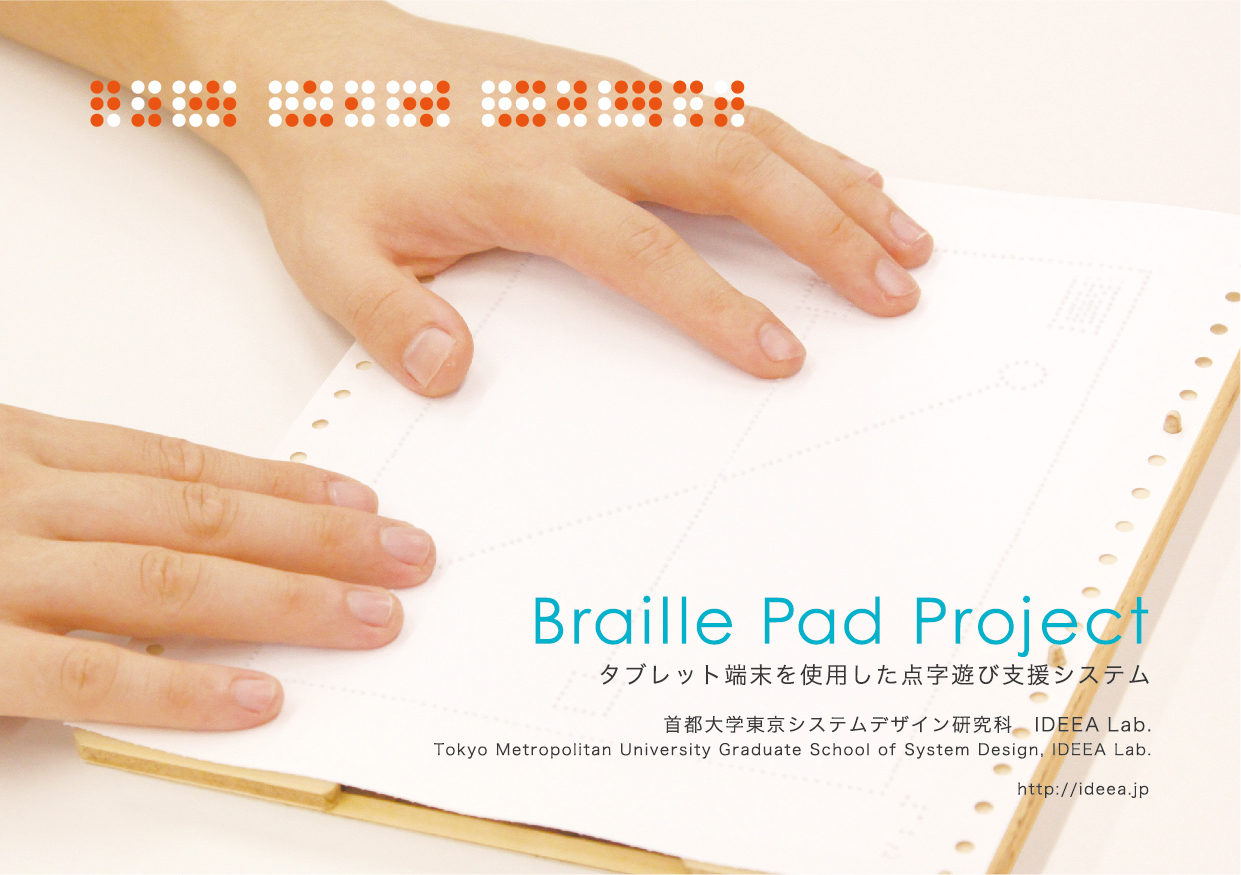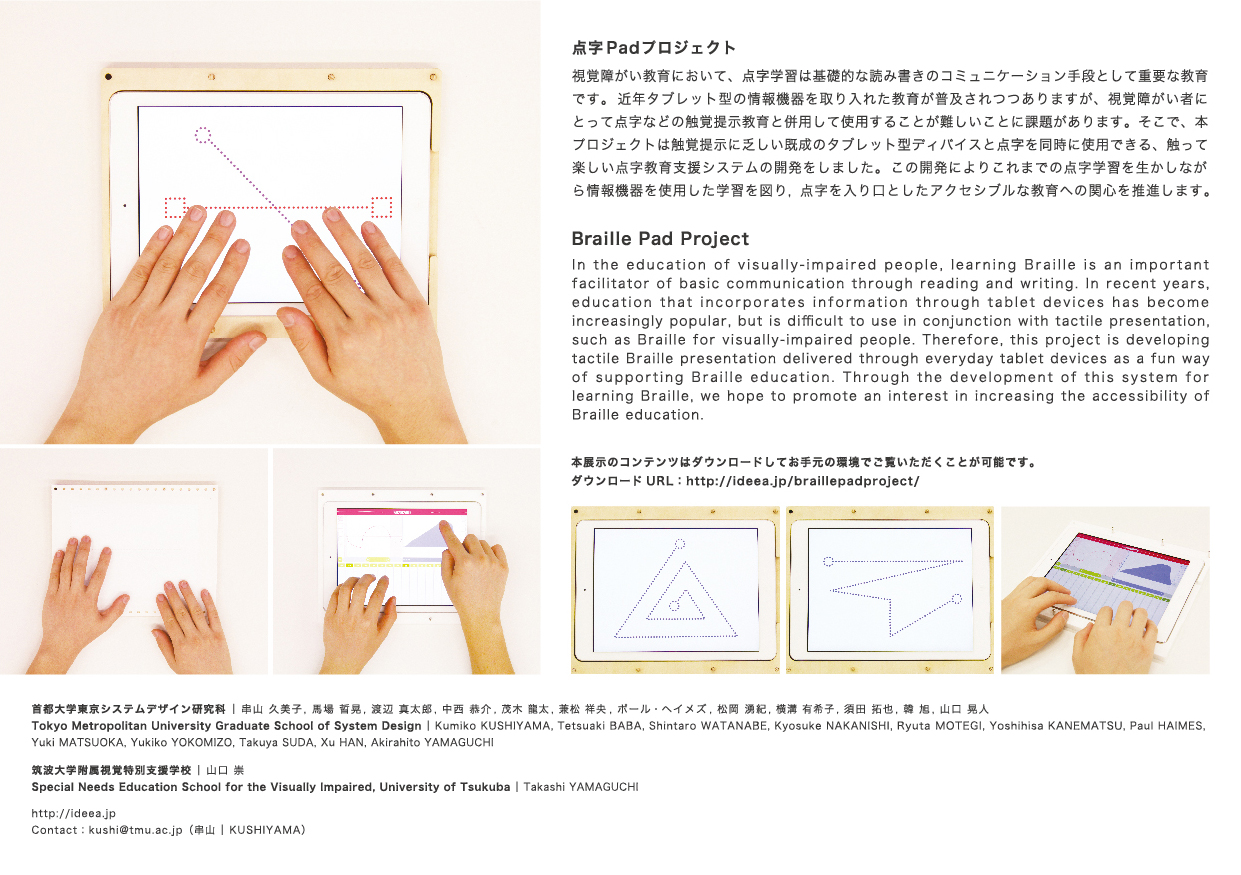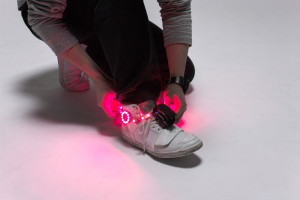

点字Padプロジェクト
視覚障がい教育において、点字学習は基礎的な読み書きのコミュニケーション手段として重要な教育です。近年タブレット型の情報機器を取り入れた教育が普及されつつありますが、視覚障がい者にとって点字などの触覚提示教育と併用して使用することが難しいことに課題があります。そこで、本プロジェクトは触覚提示に乏しい既成のタブレット型ディバイスと点字を同時に使用できる、触って楽しい点字教育支援システムの開発をしました。この開発によりこれまでの点字学習を生かしながら情報機器を使用した学習を図り,点字を入り口としたアクセシブルな教育への関心を推進します。
まるちゃんのおさんぽ
NAKANISYNTH
プロジェクトメンバー:
首都大学東京システムデザイン研究科 | 串山 久美子, 馬場 晢晃, 渡辺 真太郎, 中西 恭介, 茂木 龍太, 兼松 祥央, ポール・ヘイメズ, 松岡 湧紀, 横溝 有希子, 須田 拓也, 韓 旭, 山口 晃人
筑波大学附属視覚特別支援学校 | 山口 崇
Braille Pad Project
In the education of visually-impaired people, learning Braille is an important facilitator of basic communication through reading and writing. In recent years, education that incorporates information through tablet devices has become increasingly popular, but is difficult to use in conjunction with tactile presentation, such as Braille for visually-impaired people. Therefore, this project is developing tactile Braille presentation delivered through everyday tablet devices as a fun way of supporting Braille education. Through the development of this system for learning Braille, we hope to promote an interest in increasing the accessibility of Braille education.
MARUCHAN’s Walk
NAKANISYNTH
Project members:
Tokyo Metropolitan University Graduate School of System Design | Kumiko KUSHIYAMA, Tetsuaki BABA, Shintaro WATANABE, Kyosuke NAKANISHI, Ryuta MOTEGI, Yoshihisa KANEMATSU, Paul HAIMES, Yuki MATSUOKA, Yukiko YOKOMIZO, Takuya SUDA, Xu HAN, Akirahito YAMAGUCHI
Special Needs Education School for the Visually Impaired, University of Tsukuba | Takashi YAMAGUCHI




